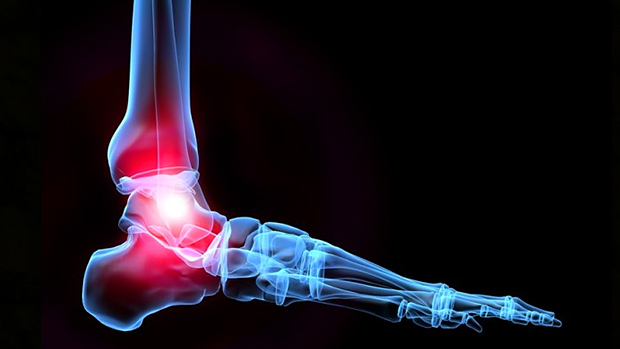Squats, Deads, and Ankles
Have trouble getting below parallel on your squats? Do your heels rise off the ground when squatting? Ever get hamstring or lower back pain during deadlifts? These are signs that your ankle mobility is a problem.
Ankle dorsiflexion occurs when the angle between the shin (tibia) and the foot gets smaller, either by actively pulling the toes up towards the shin (toes-to-shins) or by leaning the shin forward towards the toes (shins-to-toes) the way you would when squatting or deadlifting.
Athletes with mobility issues and those with a history of ankle injuries will often struggle with ankle dorsiflexion, but the pain is only sometimes felt at the Achilles tendon. And often, that tightness will cause pain up the kinetic chain and into the hams or lumbar spine.
Oddly enough, you may be able to get your heels quite low at the bottom of a calf raise, leading you to think your ankle mobility is fine, but that's the toes-to-shins mobility. Your shins-to-toes mobility is a different story.

Take off your shoes and try the weight-bearing lunge test. All you need is a tape measure and a wall. This will help you check your ankle dorsiflexion mobility.
- Stand with the big toe of your test foot about 4 inches (10 cm) from a wall, with your foot pointed straight forward. Place your other foot at a comfortable distance behind (it won't be doing anything).
- Lean your front knee straight forward – don't allow it to track inwards or outwards – and try to touch your knee to the wall without allowing your heel to lift. If you can't get that knee to touch the wall, move forward a bit. If you can, scoot back a little.
- Your test score is based on the greatest distance at which you can touch your knee to the wall without your heel lifting and with your thigh pointed straight at the wall.
- Repeat for the other foot.
Although there's no universal gold standard, a score between 4 to 5 inches (or 10 to 12.5 cm) is generally considered a normal, non-limited range of motion. If you can't get within that range, you may have found a reason for your hamstring or back pain and your difficulty squatting below parallel.
Don't be surprised if your dominant foot has a slightly greater range of motion or if a previous injury limits your dorsiflexion mobility.
If your mobility isn't up to snuff, the lunge test itself can actually help to improve it. Set up as described above with your toes a little less than half an inch (1 cm) closer to the wall than your score from the test.
In a slow and controlled movement, touch your knee to the wall for 3 x 10-12 reps per leg (alternating legs). Hold for a short pause at the end range on every rep. As your mobility improves, increase the distance slightly over time.
You can also use the toes-elevated split squat, described HERE. Using these two exercises, you should see a dramatic improvement in your range of motion and major improvements on your squat and deadlift.





